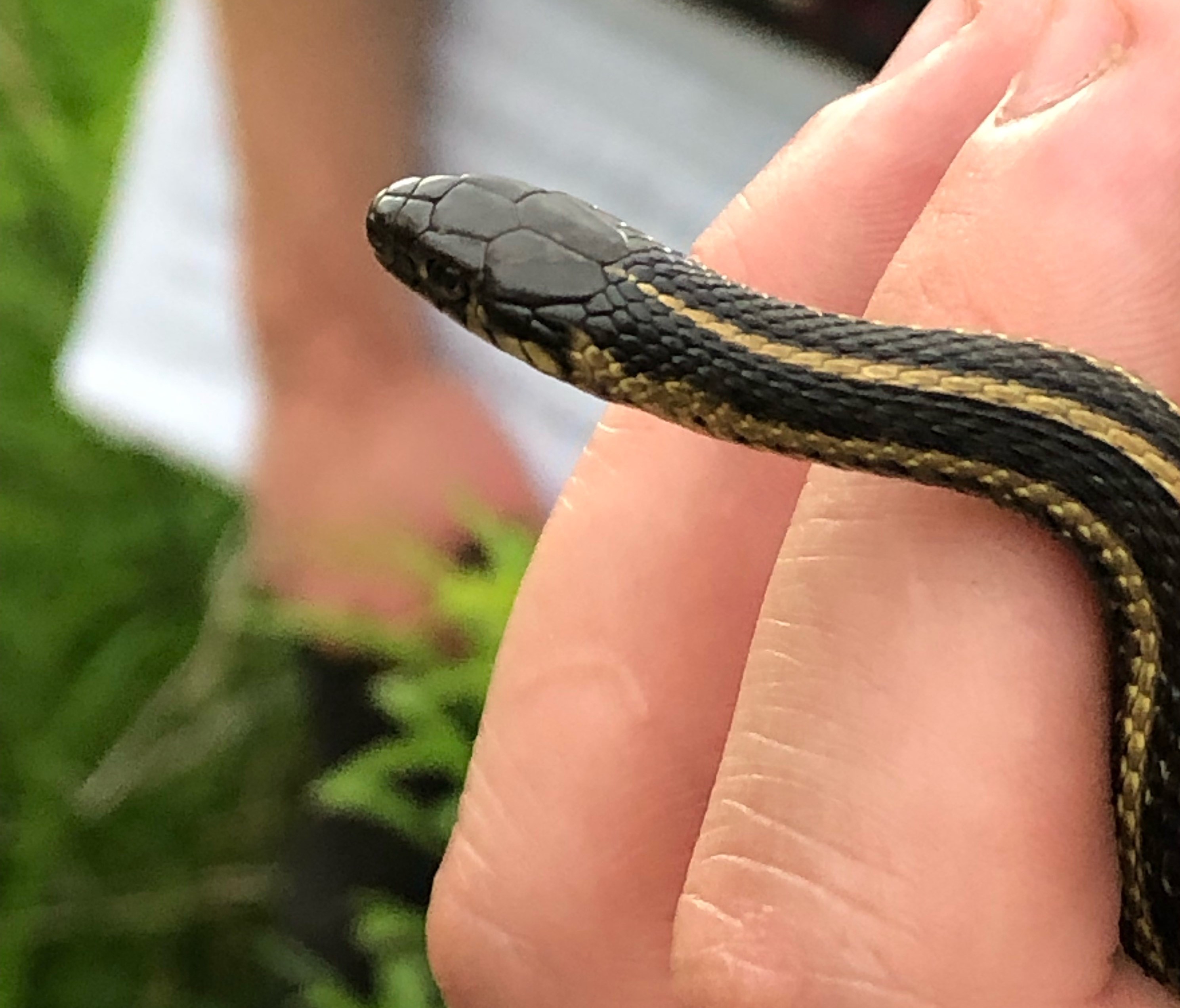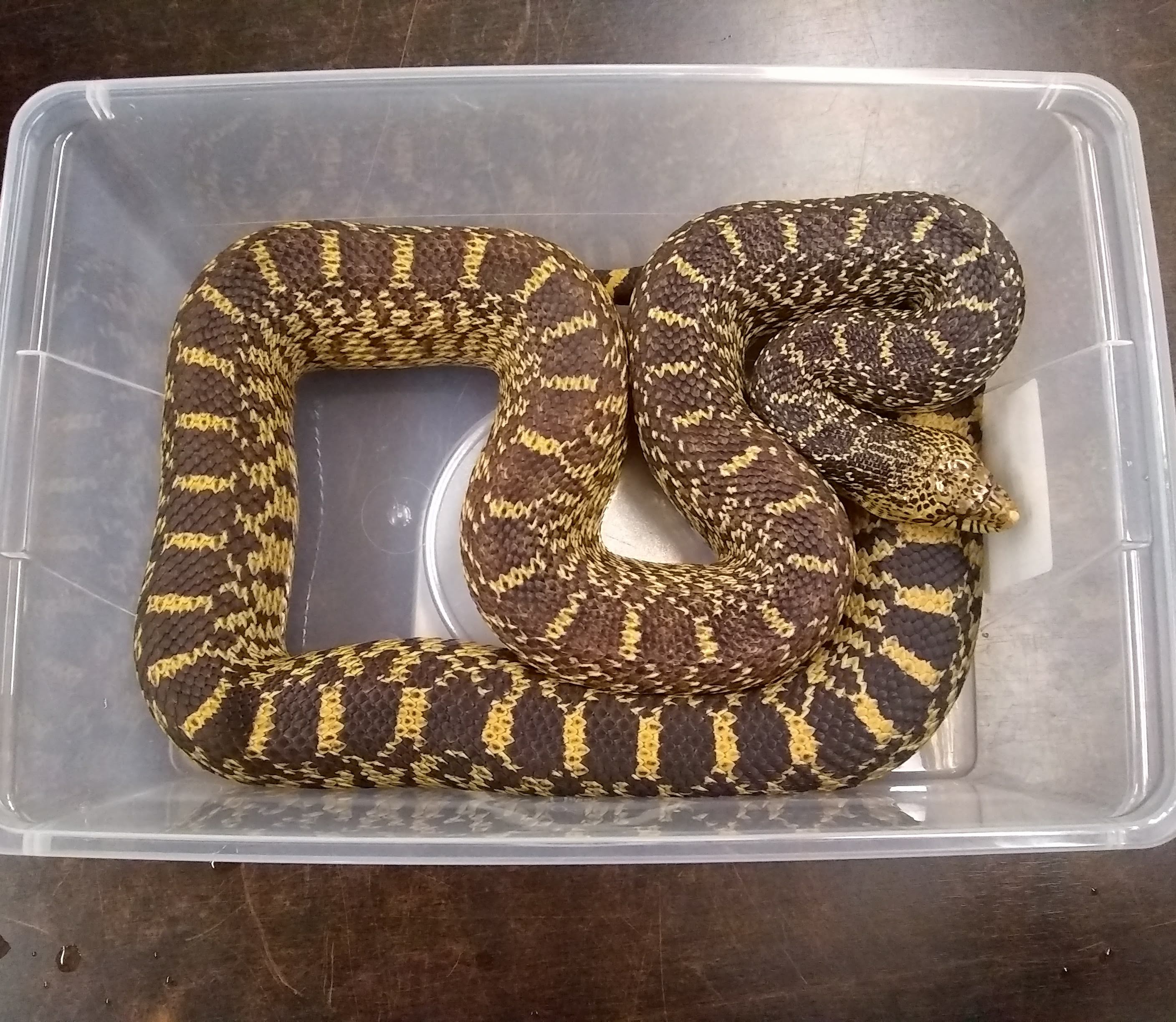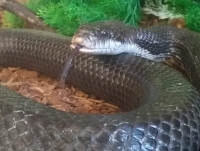The term “poisonous” is generally used to mean “a thing that could hurt or potentially kill you” but in the world of biologists, the term is more nuanced. Poisonous refers to organisms that specifically release a poison when you eat them. Think holly berries, nightshade, and poison dart frogs. In all of these cases, you would need to consume the organism for its poison to have an effect on your body.
Based off of that definition, it would seem that there is no such thing as a poisonous snake. As it turns out, though, this isn’t entirely true. Garter snakes, the small snakes that we find in large numbers in our cities and parks and throughout the state of Wisconsin, are technically, by definition, poisonous. Garter snakes prey on newts and salamanders, many of which are poisonous themselves. When a garter snake eats these poisonous critters, its body absorbs and stores the toxins, so that when they themselves get eaten, the stored poison is released. So while a garter snake bite won’t cause you any harm, it wouldn’t be a wise choice to eat one.

A Butler's garter snake, found during snake research at our Menomonee Valley branch (photo: Ashley Wallace)
But generally speaking, when we are talking about dangerous snakes, the term we are looking for is venomous. Venomous means that an organism actively bites or stings in order to release its toxin. In addition to snakes, there are many venomous spiders, a handful of venomous lizard species, and even Australia’s infamous duck-billed platypus is venomous (although in this case, the venom is injected by a spur in the platypus’ ankle, rather than the somewhat hilarious image of being bitten by its duck-bill).
In the state of Wisconsin, we have two species of venomous snakes: the Eastern Massasauga and the Timber Rattlesnake. Both of these species are found exclusively in the western part of the state (so not in Milwaukee) and both are extremely rare in our state. The Massasauga is an endangered species and the Timber Rattlesnake is also protected due to many years of hunting having an impact on its population.
While these species are rare, and bites are even rarer (there has only been one snake-bite related death in Wisconsin since 1900), you should still treat all wild snakes with caution. If you see a wild snake, appreciate it from a distance. If you don’t disturb it, it will have no reason to bother you.
There are a couple clues to look for if you are trying to determine if a snake in Wisconsin is one of these venomous species or not. Our venomous species have an elliptical-shaped pupil (like a cat), while the nonvenomous have a round pupil. You really shouldn’t be close enough to a wild snake to see its pupil, however. You can also look at the tip of the tail. Both of these venomous species have rattles on the end of their tails. While many of Wisconsin’s nonvenomous snakes may imitate the act of rattling to ward off predators, they don’t have that characteristic rattle at the end of their tails. Lastly, the venomous snakes have triangular or arrow-shaped heads, whereas the other snake species have much rounder heads.
Snakes are unique creatures that have so many cool adaptations and characteristics. While it is important to exercise caution if you see a snake in the wild, I hope you can also take a moment to appreciate them in all of their slithery glory. And if you want to meet a cool snake up close, Neile and Andre and Sara are all here, excitedly awaiting the days we can open our doors to the public once more.

Sara, the Menomonee Valley bull snake, curls up in her box to be weighed (photo: Danny Pirtle)
To learn more about snakes of Wisconsin, join Research and Community Science Coordinator Maggie Steinhauer and me on Tuesday, July 28 at 11 AM for a Facebook live program all about snakes of Wisconsin and snake research in our parks. Click here for more information on the program.





